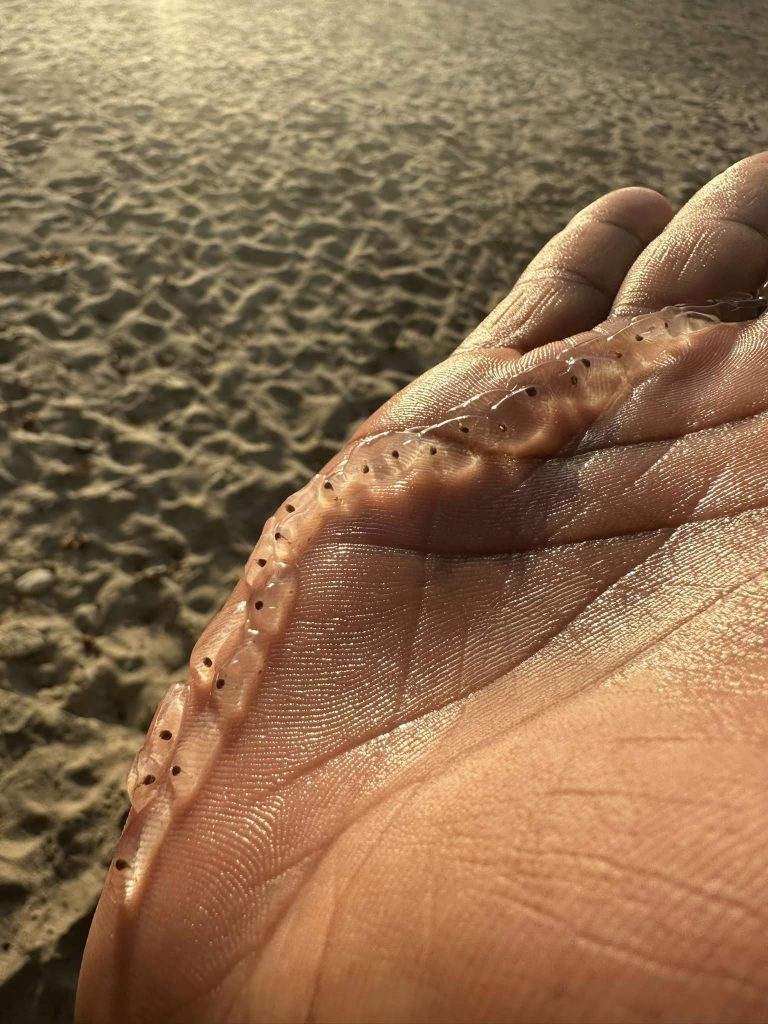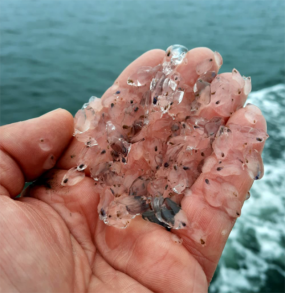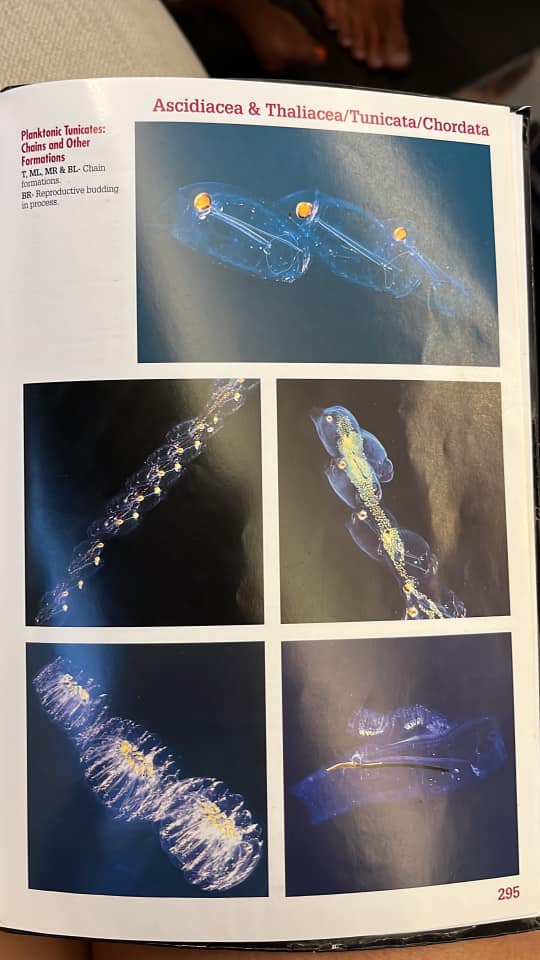In response to curiosity and concern among the public, officials from the Ministry of Environment, Natural Resources, and Climate Change have stepped forward to address the presence of marine creatures resembling jellyfish in the waters of the Territory.
On Saturday, a post was made to the BVI Community Board by a member of the public querying the presence of a large amount of jellyfish like creatures in Brewers Bay.
He, for one, initially believed that the creatures were some sort of fish egg or larvae and described them as “pulsating like a heart beat”.
Several members of the public took to the comment section and made their best guesses at what the creatures were, some frequent guesses were fish eggs, frog eggs and plankton – shared along with various photos and videos of persons encountering the creatures at different locations.
Environmental Officer II and Marine Biologist, Ms. Argel Horton, clarified in a recent press release that the creatures causing concern were sea salps.
Sea salps are gelatinous creatures belonging to the tunicate family, also known as sea squirts. They are commonly found in warm seas and often go unnoticed in the world of marine biology.
Ms. Horton reassured residents that sea salps are not harmful to humans, emphasising that there is no need for nervousness or fear when enjoying a visit to the beach.
She explained that the presence of sea salps on beaches is directly related to phytoplankton blooms in the water, as these blooms serve as their primary food source.
As Ms. Horton elaborated, the abundance of phytoplankton in the water directly affects the population of sea salps. They reproduce through cloning and match their reproduction to the availability of their food source.
As long as phytoplankton is plentiful, the sea salp population will continue to increase. However, once the food source is depleted, their numbers will decline, eventually leading to their demise.
Consequently, sea salps may wash up on the beach or sink to the ocean floor. Ms. Horton emphasized that sea salps play a vital role in nutrient cycling within the water column as they excrete nutrients that benefit ocean communities.
The world’s oceans are home to approximately fifty different species of salps, each exhibiting unique characteristics. Some species resemble small tubes, while others resemble long snakes or chandeliers hanging in the water. Sea salps typically survive for a period ranging from two weeks to three months before being consumed by mackerel and tuna or sinking slowly to the seafloor, where they accumulate in significant quantities.
To obtain more information about these marine creatures or address any concerns, individuals are encouraged to contact the Ministry of Environment, Natural Resources, and Climate Change at 284-468-2147.



